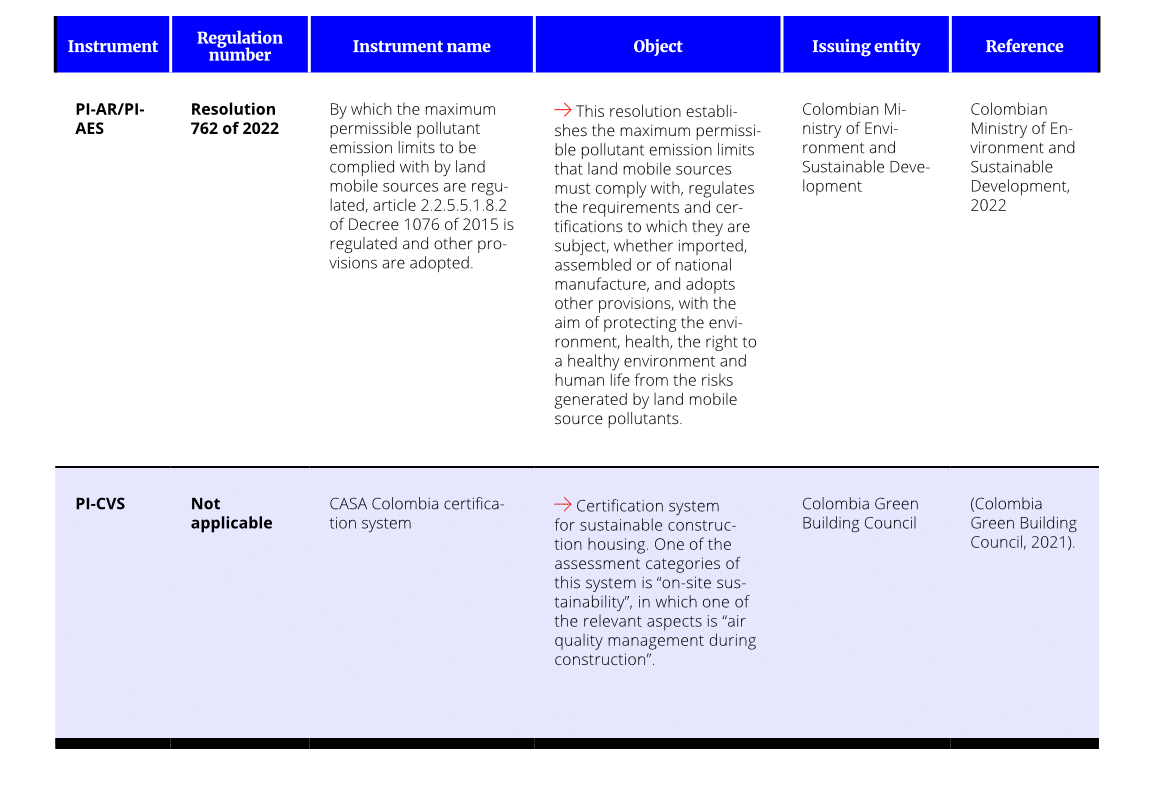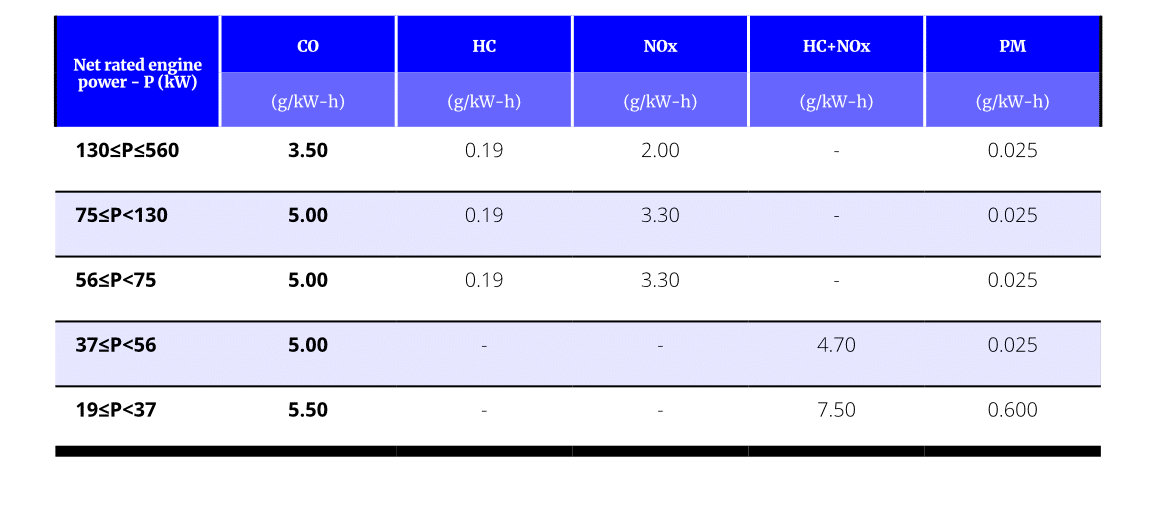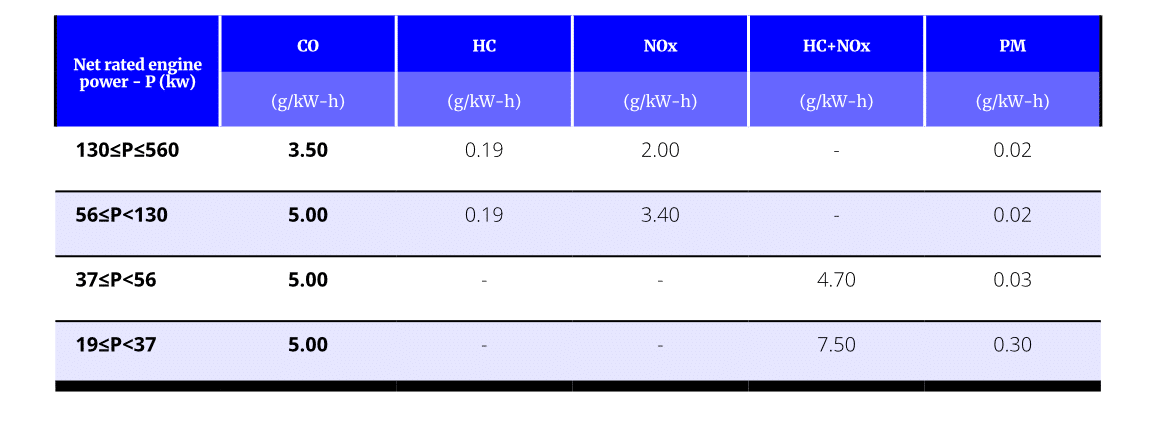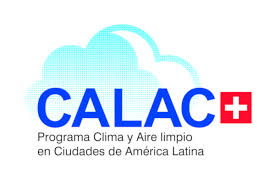COLOMBIA (en)

/1/
Definitions of
non-road mobile
machinery
In Law 769 (2002) of the Congress of the Republic, whereby the Código Nacional de Tránsito Terrestre (National Land Traffic Code) is issued, and other provisions are enacted, Article 2 includes the following definitions:
“Agricultural vehicle”: A motor vehicle with a special configuration, intended exclusively for agricultural work.
(…)
Construction or mining rolling stock: A self-propelled vehicle intended exclusively for industrial works, including mining, construction and maintenance works, which due to its technical and physical characteristics cannot travel on public or private roads open to the public.
On the other hand, in August 2022, Resolution 762 of 2022 came into force: By which the maximum permissible pollutant emission limits to be met by land mobile sources are regulated, articles 2.2.5.1.1.6.1, 2.2.5.1.8. 2 and 2.2.5.5.1.8.3 of Decree 1076 of 2015 are regulated and other provisions of the Ministry of Environment and Sustainable Development of Colombia are adopted, which defines off-road mobile land sources and the engines that are intended for these as follows:
“Off-road land mobile source: A mobile machine, portable equipment or vehicle with or without bodywork or with or without wheels, powered by an internal combustion engine, which is not designed for the carriage of passengers or goods by road. This category does not include constant speed engines, railway equipment, electric generators and recreational vehicles.
(…)
Electric off-road land mobile source: A mobile machine powered exclusively by one or more electric engines, drawing current from a rechargeable energy storage system, such as batteries or other handheld electric energy storage devices, including hydrogen fuel cells or drawing current through catenaries. These machines do not have internal combustion engines or on-board electrical generation systems as a means of supplying electrical power. “

/2/
Main regulatory
instruments for NRMM
emissions reduction
Table 1 presents a compilation of different types of instruments identified in Colombia for the control of air pollution generated by NRMM.
Tabla 1
Regulatory framework and identification of NRMM emission reduction tools – Colombia1.

1 The following instruments are not directly related to emissions reduction, but can help the authority to strengthen the control and surveillance mechanisms of these emission sources: Resolution 1068 of 2015, which regulates the National Registry of Industrial Agricultural and Construction Machinery. Decree Number 723 of 2014, Incorporation of a GPS system, prior to registration in the RUNT. Resolution 2086 of 2014, by which the technical conditions of the equipment, installation, identification, operation and monitoring of the Global Positioning System (GPS) or other electronic security and monitoring device and the control mechanism for the change of the device are set, as well as the parameters for the authorization of service providers and the respective registration. Decision 774 of 2012, Andean Policy to Combat Illegal Mining.
Law 769 (2002) of the Congress of the Republic, by which the National Land Traffic Code is issued, defines the obligation of the Ministry of Transport to implement the National Traffic Registry (RUNT), which by Article 207 of Law 019 of 2012, which amended Article 10 of Law 1005 of 2006, must have the registry of agricultural, industrial and self-propelled construction machinery. It is important to note that, in the same year, Colombia signed a regional agreement between Andean countries against illegal mining, which was reaffirmed in Decision 774 (2012) of the Andean Council of Ministers of Foreign Affairs, which defines the “Andean Policy to Combat Illegal Mining”. The procedure for registering machinery was regulated by the Ministry of Transport through the issuance of Resolution 1068 of 2015 and technical provisions were set forth for the installation of GPS devices for machinery tracking and provisions on the machinery circulation on roads (Ministry of Transport, 2015).
The local authority of Bogota issued Decree 332 of 2021 of the Mayor’s Office of Bogota, “Whereby the Strategic Plan for the Integral Management of Air Quality in Bogotá 2030 – Air Plan is adopted”, which includes a line of action for the reduction of construction machinery emissions.

/3/
Emission standards
for air pollutants
Resolution 762 of 2022 sets maximum levels for carbon monoxide (CO), particulate matter (PM), hydrocarbons (HC) or non-methane hydrocarbons (NMHC) and nitrogen oxides (NOx). The emission standards are categorised by ranges of net rated engine power in kW and defined in terms of mass of pollutant per unit of engine work in g/kW-h.
Tables 4.1 and 4.2 present the emission limits for off-road mobile sources according to the Draft Resolution, which would apply to compression ignition engines under dynamic test that are assembled, manufactured or imported into the country from 1 January 2023. For approval of the Certificado de Emisiones en Prueba Dinámica y Visto Bueno del Protocolo de Montreal (CEPD) (Emissions Test Cycle and Montreal Protocol Approval), compliance with European or US standards must be demonstrated. Exemptions from compliance are made for non-road land mobile sources used exclusively for agricultural work, those that operate with fuel other than diesel and those that, regardless of their fuel and work, have a rated power below 19 kW or above 560 kW (Colombian Ministry of Environment and Sustainable Development, 2020).
Tabla 2
Maximum permissible emission limits for non-road land mobile sources in dynamic testing, assessed under the steady- state cycle (NRSC) and the transient cycle (NRTC), according to European standards

Tabla 3
Maximum permissible emission limits for non-road land mobile sources in dynamic testing, assessed under the steady- state cycle (NRSC) and the transient cycle (NRTC), according to US standards

Regulatory standards for the conformity measurement of gaseous and particulate emissions for non-road land mobile sources were adopted by Colombia from the European Union Directive 97/68/EC as amended by 2012/46/EU (Directive 2012/46/EU, 2012) of the European Union and the United States Code of Federal Regulations (CFR) title 40, part 1039 in Ministry of Environment and Sustainable Development of Colombia (2020).

/4/
Import requirements
and type-approval
processes
4.1 Import requirements
Article five of Chapter II of Resolution 1068 of 2015 specifies that manufacturers, assemblers and importers of self-propelled agricultural, industrial and construction machinery that has been manufactured, imported or assembled in the country as of the date of entry into force of Decree 019 of 2012, are required to upload the detailed information of the machinery to the RUNT system prior to registration (Ministry of Transport, 2015). Additionally, it shall be noted that in order to upload the detail of the machinery, the owners, holders and/or lessees, manufacturers, assemblers and importers of machinery pertaining to tariff subheadings 8429.11.00.00.00, 8429.19.00.00, 8429.51.00.00, 8429.52.00.00, 8429.59.00.00 and 8905.10.00. 00, must carry out the procedure described in article six of chapter II of the aforementioned resolution, which specifies the obligation to previously have a Global Positioning System (GPS) and the submission of the Formulario de Declaración de Propiedad (Declaration of Machinery Ownership Form) available as an annex to the aforementioned resolution.
On the other hand, Resolution 762 of 2022 of the Ministry of Environment and Sustainable Development, as of 2023, establishes as a requirement for the importation, assembly or manufacture of machinery that is within the scope of the standard, the approval of a certificate called Certificado de Emisiones en Prueba Dinámica (CEPD) y Visto Bueno por Protocolo de Montreal (Certificate of Emissions in Dynamic Test (CEPD) and Montreal Protocol Approval). The Montreal Protocol Approval follows the guidelines established in Resolution 1652 (Colombian Ministry of Commerce, Industry and Tourism, 2007).
Manufacturers, assemblers or importers must submit the format in Annex 3 of the Draft Resolution to the National Environmental Licensing Authority (ANLA), together with the technical test report and other applicable documents and certifications from the manufacturer that are required for processing. The Draft Resolution, in Part II, Article 4, also states that:
- In order to obtain the Montreal Protocol Approval, the manufacturer, importer or assembler must comply with Resolution 1652 of 2007 or the regulation that modifies, adds or substitutes it, in which it is stated that it did not require for its production or operation any of the ozone-depleting substances listed in said resolution.
Regarding used agricultural machinery, the Colombian Agricultural Institute (ICA), through Resolution No. 24690 of 2018, has established sanitary inspection procedures for this type of machinery entering the national territory. The import requirements include the internal and external cleanliness of the machinery, in the absence of pests, vegetation and soil present. These controls aim to protect the national agricultural sector from pests and invasive vegetation (Colombian Agricultural Institute, 2018).
Other import requirements imposed by the ICA under this resolution are:
- Before importing, it is necessary to complete the application for the Documento de Requisitos Fitosanitarios para Importación (DRFI) (Phytosanitary Requirements Document for Importation), through the virtual platform SISPAP (Sanitary Information System for the Importation and Exportation of Agricultural and Livestock Products);
- In order for the machinery to be inspected by the ICA, the importer must submit the following documentation:
- Application for Phytosanitary Inspection of Agricultural Imports.
- Import licence.
- Document certifying the pre-enlistment of used machinery, equipment and/or vehicles certifying cleanliness.
Once all documentation requirements have been fulfilled and provided that the sanitary inspection is favourable, the ICA will issue the Certificado Fitosanitario para la Nacionalización (CFN) (Phytosanitary Certificate for Nationalisation) that will allow the entry of the machine, equipment or vehicle.
4.2 Type-approval requirements
The type-approval processes defined in Resolution 762 of 2022 of the Ministry of Environment and Sustainable Development are based on the emissions tests or dynamic test evaluation procedures defined by article 5 of the same The resolution 762 of 2022 of the Ministry of Environment and Sustainable Development, as of 2023, establishes as a requirement for the import, assembly or manufacture of machinery that is within the scope of application of the standard the approval of a certificate called the Emissions Certificate in Dynamic Test (CEPD) and Approved by the Montreal Protocol. document, which must be carried out by manufacturers, assemblers or importers wishing to bring machinery into Colombian territory.
According to the Resolution, such tests must comply with the regulatory guidelines described by the United States and the European Union. If importers, assemblers or manufacturers of non-road machinery wanted to use other types of tests, these would have to be agreed by the EPA or the European Union and would have to be more stringent.
According to Article 6 of Resolution 762 of 2022, the technical test report for obtaining the Certificate of Emissions in Dynamic Test (CEPD) must be issued by a testing laboratory accredited by the National Accreditation Body of Colombia (ONAC) under the ISO/IEC 17025 standard or by a testing laboratory accredited by an accreditation body within the multilateral recognition agreements to which ONAC is a signatory.
According to article 11 of Resolution 762 of 2022, in case the previously certified machinery is going to have any modification in the specifications described in the CEPD, the importer, assembler or manufacturer must request the approval of a new CEPD that provides for these modifications. Likewise, in the event that the Ministry of Environment and Sustainable Development establishes new maximum permissible pollutant emission limits, and in the event that the previously certified machinery does not comply with them, the importer, assembler or manufacturer must request the approval of a new CEPD, in which compliance is supported.
According to the Resolution, the test cycles to be used for dynamic testing for non-road land mobile sources are NRSC and NRTC as used in the European Union and the United States.

/5/
Labelling
processes
According to Resolution 762 of 2022, all mobile non-road sources must carry a visible label on the engine. According to Article 28, the label shall comply with the following specifications.
“(…)
- Be attached in such a manner that it cannot be removed without destroying or defacing the label;
- Be durable and legible for the entire engine life.
- Be secured to an engine part necessary for normal engine operation and not normally requiring replacement during engine life.
- Be located in a visible place after the engine has been installed in the machinery. A supplementary label may be affixed to a part other than the engine which complies with the specifications set out in this Article if the label required on the engine is hidden after the engine is installed in the machinery; and
- A supplementary label in the Spanish language shall be affixed on a part other than the engine when the engine has a label which complies with the specifications set out in this Article and is in a language other than the official language of the Republic of Colombia.
The labelling shall contain the following information:
- Title: “Important engine information”;
- Name of the manufacturing company;
- Engine designation (code, usually numeric or alphanumeric, identifying the engine family);
- Engine type;
- Engine displacement;
- Net rated engine power;
- Fuel type;
- Date of manufacture (month and year);
- Expressly state the emission standard the engine meets (e.g., Tier 3, Stage IV, etc.); and
- Emission measurement cycle.
Additional information such as maintenance conditions or compliance or non-compliance with other legal provisions may be included on the required label.
(…)”.

/6/
Regulation on machinery
useful life, repowering, overhaul and
scrapping practices
For Colombia, no requirements were identified regarding the maximum age of the NRMM for its operation. No information has been identified on repowering, overhaul and end-of-life scrapping practices.

/7/
Operational and road
circulation requirements
7.1 General operational requirements
Article 28 of Law 769 of 2002, which establishes the National Land Traffic Code and other provisions, states:
Article 28. Technical-mechanical, gas and operating conditions: in order for a vehicle to be able to travel through the national territory, it must guarantee at least the perfect functioning of the brakes, the steering system, the suspension system, the visual and audible signals system and the exhaust system; and demonstrate an adequate condition of the tires, the safety glass and the mirrors and comply with the gas emission standards established by the environmental authorities.
The National Traffic Code does not specify whether the application of Article 28 covers NRMM. This is an aspect that needs to be clarified in the regulations.
7.2 Operational requirements for NRMM
According to Resolution 1068 of 2015, once self-propelled agricultural, industrial and construction machinery is registered in the RUNT system, machinery classifiable under subheadings 8429.11.00.00, 8429.19.00.00, 8429.51.00.00, 8429.52.00.00, 8429.59.00.00, 8431.41.00.00, 8431.42.00.00.00 and 8905.10.00.00 of the customs tariff, shall have a global positioning system or other electronic security and monitoring device, permanently installed in accordance with the requirements established by the Colombian National Police (Ministry of Transport, 2015a).
The same Resolution defines the waybill as a document that authorises the movement or transit of machinery under subheadings 8429.11.00.00.00, 8429.19.00.00, 8429.51.00.00, 8429.52.00.00, 8429.59.00.00 and 8905.10.00.00, by public or private land (road and rail), river and sea routes in the country (Ministry of Transport, 2015a).
7.3 General road circulation requirements
According to Articles 28 and 50 of Law 769 of 2002 (Colombian Ministry of Transport, 2002) in order for the vehicle fleet to circulate in the national territory, it must comply with the pollutant emission standards set out in the regulations, and it must be guaranteed that the vehicles are in optimal mechanical and safety conditions.
The National Traffic Code does not specify whether the application of these requirements covers NRMM/1/.
7.4 Road circulation requirements for NRMM
With regard to road transit requirements, Resolution 1068 of 2015, which regulates the National Register of Self-propelled Industrial Agricultural and Construction Machinery and establishes other provisions, sets forth the following (2015b):
Circulation: According to Chapter VI, Article 29, in order for machinery to circulate on public or private roads open to the public, it cannot exceed the dimensional limits (size and weight) established in Resolution 4100 of 2004 and must have tires for its movement as per manufacturer’s configuration. Likewise, machinery circulating on public or private roads open to the public between 06:00 and 16:59 must have a lighting system that allows it to be easily seen by other vehicles, people and obstacles, as well as being visible to other road users. For the hours between 17:7.4 00 and 05:59, the machinery shall have an amber-coloured device on the front and rear of the equipment.
In this same section, a fluorescent lemon-yellow tape on high intensity retro-reflective paper must be attached to the machinery, perimetrically on the upper and lower part of the equipment or trailer being pulled. This same section establishes the requirements for the following aspects:
Transit: In paragraph f, it mentions that machinery shall travel on the shoulder of the road, in the event that there is no shoulder, the machinery shall circulate on the far-right side of the road, at a distance of no more than one metre from the edge of the carriageway.
Speed: the travel speed shall be 20 km/h as minimum speed and 50 km/h as maximum speed.
Parking: Machinery shall not be parked within the strip that forms the carriageway, including the shoulder of the road.
Driving licence: persons driving self-propelled agricultural, industrial and construction machinery must have an operator’s certificate for driving the type of machinery mobilised and have a category B1 driving licence in accordance with the provisions of Resolution 1500 of 2006.
Identification number: according to Resolution 1068 of 2015, once the information on self-propelled agricultural and construction machinery has been uploaded to the RUNT, the system will assign a consecutive alphanumeric code of 8 characters corresponding to the type and registration and identification number of the self-propelled agricultural, industrial and construction machinery in the system, being Agricultural Machinery (MA) followed by 6 digits; Industrial Machinery (MI) followed by 6 digits and Construction or Mining Machinery (MC) followed by 6 digits.
7.5 NRMM in illegal mining
With regard to controls on illegal mining activities in Colombia, due to the environmental impact and the problems of violence caused by the unregulated extraction of minerals such as gold, the Ministry of Foreign Affairs, together with the Andean Council, promoted Decision 774 of 2012, which aimed to generate prevention and control measures for illegal mining activities (The Commission of the Andean Community, 2012). The main objective of Decision 774 was to optimise the control and surveillance of the import, export, transport, processing and sale of minerals in the Andean Region.
For all of the above reasons and thanks to Decision 774 of 2012, the Government of Colombia promoted the creation of regulations focused on obtaining statistics on the machinery used in the country and registered with the RUNT (for example, Resolution 1068 of 2015 regulating the National Register of Industrial Agricultural and Self-propelled Construction Machinery) and, additionally, contributing to the formalisation and regulation of mining.
Likewise, the National Government, through the Ministry of National Defence, issued Decree 2235 of 2012, which aims at destroying machinery used in mineral exploration or exploitation activities without an environmental licence or mining title (Ministry of National Defence, 2012). The background to this Decree is found in the National Development Plan 2010-2014, which in its Article 106, prohibited the use of dredges, mini-dredges, backhoes and other equipment used in mining activities without a mining title registered in the National Mining Registry (Congress of the Republic of Colombia, 2011). Likewise, failure to comply with this prohibition would result in penalties such as the seizure of goods used in the illegal activity, and the application of a fine of up to one thousand legal monthly minimum wages in force.

/8/
Procedures for NRMM
control and inspection
in the operation stage
In the Draft Resolution regulating the maximum permissible limits of pollutant emissions to be met by land mobile sources, two schemes are mentioned for the inspection and control of non-road sources. The first consists of verifying the emissions of combustion gases generated through the opacity test where, if the machinery inspected exceeds the No. 2 pattern of the Ringelmann scale, the authority may exercise some type of sanction. On the other hand, all machinery must carry a label that must be visible on the engine (Colombian Ministry of Environment and Sustainable Development, 2020).
Issues related to inspection and control of NRMMs for illegal mining are described in the previous section of this document (see section 10.4.5).

/9/
Actors in import processes, manufacturing, registration, marketing, control and final practices of useful life of the MMNC
The table below presents the main stakeholders involved in NRMM processes in Colombia. Subsequently, some complementary aspects of the processes are presented.
Tabla 12. 4.
Stakeholders and roles – Colombia

Fuente: elaboración propia.
Import
According to Resolution 762 of 2022, which regulates the maximum permissible emission limits of pollutants to be met by land mobile sources, Article 2.2.5.5.1.8.2 of Decree 1076 of 2015 is regulated and other provisions are adopted (Colombian Ministry of Environment and Sustainable Development, 2020). According to the definitions in its Annex 1, an importer is defined as:
Unrelated importer: A natural or legal person importing land mobile sources that does not have the brand representation of the manufacturer.
Manufacturing and distribution
In line with the other definitions included in the Draft Resolution, manufacturer certification is defined as follows:
Manufacturer’s certification: Document issued by the manufacturer of a motor vehicle certifying the technical specifications of a mobile source.
Registration
The Draft Resolution cites Law 769 of 2002, as a regulation that defines the procedures for the registration of NRMM in the National Traffic Registry (RUNT). By means of this law, all vehicles circulating in Colombian territory must be registered in the RUNT, including construction and agricultural machinery (Colombian Ministry of Transport, 2002).
According to Law 769 of 2002, in Chapter VII, National Traffic Registry, Article 46 on registration states:
Registration: Every motor vehicle, registered and authorised to circulate in the national territory, including machinery capable of moving, must be registered by the competent authority in the National Traffic Registry (RUNT) kept by the Ministry of Transport. Trailers and semi-trailers must also be registered. All registered and authorised motor vehicles must present the current technical-mechanical inspection certificate, which complies with the terms provided for in this Code.
On the other hand, according to Article 49 of the same Law, “if modifications are made to the characteristics that identify a motor vehicle, the modifications shall be subject to authorisation by the traffic authority and shall be registered in the National Registry of Motor Vehicles“:
Prior authorisation for change of characteristics: Any modification or change in the characteristics that identify a motor vehicle shall be subject to prior authorisation by the competent traffic authority and must be registered in the National Traffic Registry (RUNT). In no case may the identification numbers of the engine, chassis or serial number of a vehicle be changed, modified or tampered with, nor may the license plates of the vehicle be defaced or altered, under penalty of being subject to the sanction provided in this Code for those who drive without license plates.
Resolution 1068 of 2015, which regulates the National Register of Self-propelled Agricultural, Industrial and Construction Machinery and establishes other provisions, assigns the Ministry of Transport, or whoever it delegates, the responsibility of registering and issuing the respective registration card of the NRMM, according to the provisions of Decree 019 of 2012.
Consultation documents (downloadable)
Formatos de importación y exportación
